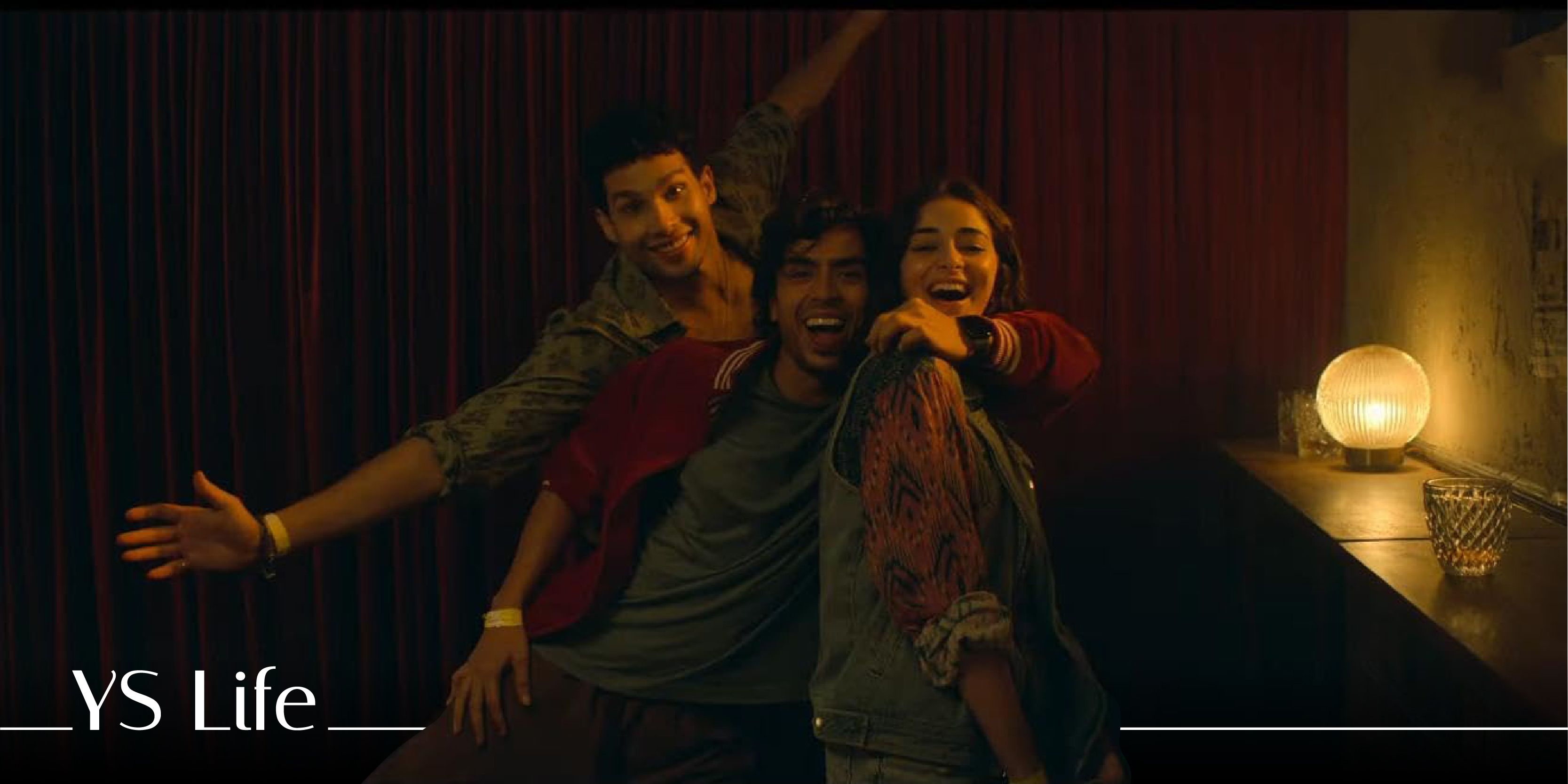Kho Gaye Hum Kahan is a tepid tale of Gen Z’s social media obsession
While its young cast fits the bill perfectly, and songs keep the proceedings peppy, Kho Gaye Hum Kahan is never adequate to get one invested.
Starring: Ananya Pandey, Sidhanth Chaturvedi, Adarsh Gourav, Kalki Koechlin, Anya Singh, Rohan Gurbaxani, and Vijay Maurya, among others.
Millennial angst and Gen Z relationship drama form the crux of Kho Gaye Hum Kahan. From writers Zoya Akhtar, Reema Kagti, and Arjun Varain Singh—the film is set in the niche culture of primarily English-speaking young folk of Mumbai’s tony western suburbs like Bandra and Khar.
Neil (Adarsh Gourav), Ahana (Ananya Pandey), and Imaad (Sidhanth Chaturvedi) have been friends since school. The film opens with a stand-up comedy performance by Imaad, where Ahana is present with her boyfriend Rohan (Rohan Gurbaxani) and Neil to cheer him on.
Imaad has family money and shares his apartment with Ahana. Neil, a fitness trainer, works at a posh gym, where his paths cross with Malaika Arora.
After Ahana and Rohan break up, and Neil gets newfound self-worth from his influencer client, Lala (Anya Singh), the three decide to start a new fitness club together. They plan to build it like a sustainable business.
Meanwhile, Imaad, addicted to Tinder, finds a photographer Simran (Kalki Koechlin), who becomes a friend and romantic partner over some time. Older than Imaad, she is dealing with a personal tragedy but also awakens his nicer side. Only as things get serious for the characters, everyone’s flaws emerge.
Imaad suffers from intimacy issues rooted in a past unfortunate incident. Neil is delusional about his influencer girlfriend. Ahana creates a fake sense of glamour on social media to get Rohan back. After some fights and heartburn, each finds their way back to their true self and becomes friends again.
The core message of this film is spelt out in its trailer—looking at other people’s photos and chasing their lives over time creates an illusion of reality. It takes one away from their goals or ambitions. Social media can’t be a measure of one’s life and self-worth. Its point is valid and well-taken.
But there needs to be more to sustain an entire film.
Kho Gaye Hum Kahan could well have been a heartwarming tale of friendship and camaraderie when short attention spans and flippant relationships are common among this generation. It just never takes off.
Each character has personal issues to contend with. Some of these they share with their friends, and others, they internalise. However, at no point, do the stakes feel too high or too risky.
A decision to quit a job is just a fussy comment by a character to express some concern, but it doesn’t seem serious. It is also true that for this generation today, there is always financial support to fall back upon, especially in the upper-middle class section.
For Neil, lifestyle costs in his Bandra neighbourhood should be a deciding factor. Again, this never seems to occupy his mind or dictate his choices.
Each character is floating in a bubble of self-indulgent, unreal thoughts, and whims. The lack of real-life challenges in their cushioned existences makes their problems seem unimportant. It is also compounded by the minimal responses or emotions they show at any point. Except for moments connected to what they do on social media, everything else seems part of the course in their lives.
Given that it is written by a team of nuanced storytellers—the characters are furnished with appropriate mannerisms, responses, and backgrounds.
The actors pull off their parts effectively, with Gourav standing out for his restrained performance. Pandey fits in the shoes of a successful girl, insecure in relationships. Chaturvedi is charming as the stand-up comic, but at moments when emotional expression is required, he underplays them.
The film has a solid cast of supporting actors, with Singh pulling off the self-centred stand-up comic part well, and Kalki as always easy in her part.
It also gets the milieu perfectly, transporting the viewer to the life and lingos of Bandra. Its music is fairly decent with two songs, Hone Do Jo Hota Hain (music by OAFF–Savera, lyrics by Javed Akhtar, sung by Savera and Lothika Jha) and Teri Yeh Baatein (music by OAFF- Savera, lyrics by Ankur Tewari, sung by Savera)—staying on with the viewers after the film ends.
The film also marks the directorial debut of Arjun Varain Singh, who kept a touch of intimacy in the film by keeping the camera close to its central characters for most of the narrative. But it also distinctly reminds one of Gehraayian, as how the lighting and the frames are set. The similarity extends to interactions between its characters, their costumes and their worlds.
The story, though, is not immersive or moving. Despite a few poignant moments and efficient performances from the lead actors, Kho Gaye Hum Kahan flat-lines at most points, never making the viewer root for anyone in it.
The overwhelming influence of social media is a danger as peer pressure and impossible standards of income, living and personal appearance become popular. While a worthy premise, making a film around it would need a greater dramatic tone.
Buddy films have been about bigger battles and deeper wounds in the past. One about the digital native generation shouldn’t be any different.
Rating: 3/5
(The copy was updated after making factual changes.)
Edited by Suman Singh











